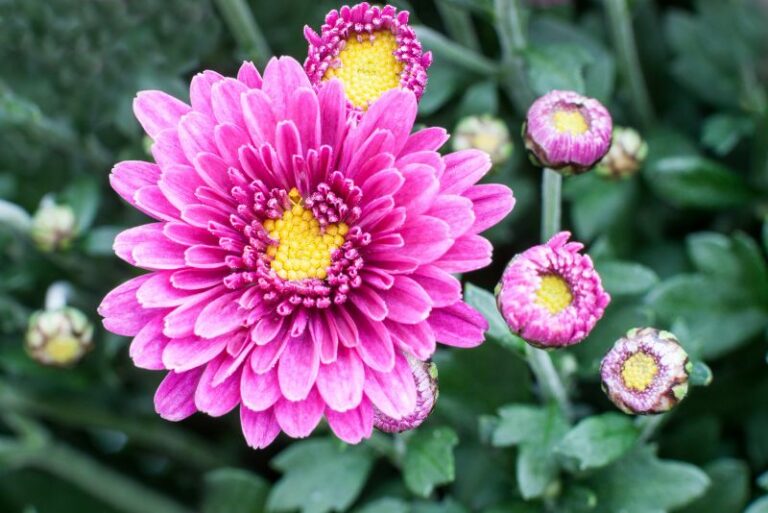How to Grow Agastache: A Gardener’s Guide
Gardening is an enriching blend of art, science, and patience. For many garden enthusiasts, the desire to cultivate a space that not only looks beautiful but also serves a purpose beyond aesthetics drives the choices of plantings. One such plant that balances form and function is agastache, a group of perennials known for their prolonged bloom times, aromatic leaves, and various uses in the kitchen and the home apothecary.
In this comprehensive guide, you will find all the information you need to successfully grow and care for agastache, ensuring it becomes a vibrant addition to your garden and a staple in your sustainable living practices.
Choosing the Right Location

Agastache, also known as hyssop, comes in several species and cultivars, each with its unique preferences. When deciding where to plant agastache, consider the following location tips:
Sunlight Requirements
Agastache thrives in full sunlight, typically needing at least six hours of direct sun daily. In areas where summers are particularly hot, a little afternoon shade can help prevent wilting.
Soil Conditions
The ideal soil for agastache is well-draining and slightly alkaline with a pH in the range of 6.5 to 7.5. It’s best to avoid waterlogged soil to prevent root rot. If your soil is too heavy, consider adding some sand or perlite to improve drainage.
Planting and Watering Tips
Establishing healthy agastache plants from the start is crucial to their long-term success. Here are some planting and watering guidelines to follow:
Planting Season
Agastache can be planted in both spring and fall, as long as the threat of frost has passed. If starting from seed, consider using a seedling tray in early spring to give the plants a head start before the growing season.
Watering Frequency and Methods
Young agastache plants benefit from regular watering; however, once mature, they are relatively drought-tolerant. Water deeply but infrequently to encourage deep root growth and resilience. Mulching around the base of the plants can help retain moisture and suppress weeds.
Maintenance and Care
Caring for agastache is relatively straightforward, but a little attention goes a long way in maintaining their vigor:
Pruning and Deadheading
Deadhead agastache regularly to prolong flowering. In colder climates, pruning it back in late fall or early winter is advisable to protect the roots from frost. This also encourages bushier growth the following spring.
Fertilization Needs
Agastache thrives in average to somewhat fertile soil. You can feed it with a balanced fertilizer in the spring, but be cautious not to over-fertilize, as this can lead to excessive foliage at the expense of blooms.
Harvesting and Utilizing Agastache
One of the delightful aspects of growing agastache is harvesting its bounty for culinary and medicinal purposes:
When to Harvest
For culinary use, harvest the leaves and flowers as needed during the growing season. Medicinally, the peak time for harvest is when the plant is in full bloom for the highest aromatic and chemical content.
Culinary and Medicinal Uses
Agastache makes a delicious, aromatic addition to teas, desserts, and savory dishes. With a subtle licorice flavor, it complements a wide range of flavors. Medicinally, it is prized for its digestive and calming properties, often used in teas and herbal blends.
Troubleshooting Common Issues
Like any plant, agastache is susceptible to certain pests and diseases. Here are some common problems and solutions:
Pests and Diseases
Aphids and spider mites can sometimes affect agastache. Monitor your plants regularly, and if infestations occur, try a strong spray of water or an insecticidal soap. Proper spacing and aeration can also prevent powdery mildew, a common fungal disease.
Yellowing Leaves or Wilting
Yellowing leaves can be a sign of over-watering or poor drainage, while wilting can indicate both under and over-watering. Adjust your watering habits accordingly, and ensure the soil is draining well.
Conclusion
Agastache is a resilient and rewarding addition to any garden. By carefully selecting the right location, understanding its watering and care needs, and utilizing its harvest to its fullest potential, you can enjoy the benefits of agastache throughout the year.
Remember, successful gardening is a continuous cycle of observation, adjustment, and nurture. With the insights provided in this guide, you are well on your way to cultivating a lush, aromatic patch of agastache that not only beautifies your space but also contributes to a sustainable and healthful lifestyle.
By incorporating these tips and guidelines, not only will you enjoy the process of growing agastache, but you’ll also witness the countless butterflies, bees, and other beneficial insects it attracts to your garden. Whether you’re a seasoned gardener, a kitchen maven, or an herbal enthusiast, agastache is a versatile plant that’s truly a gem worth nurturing.





